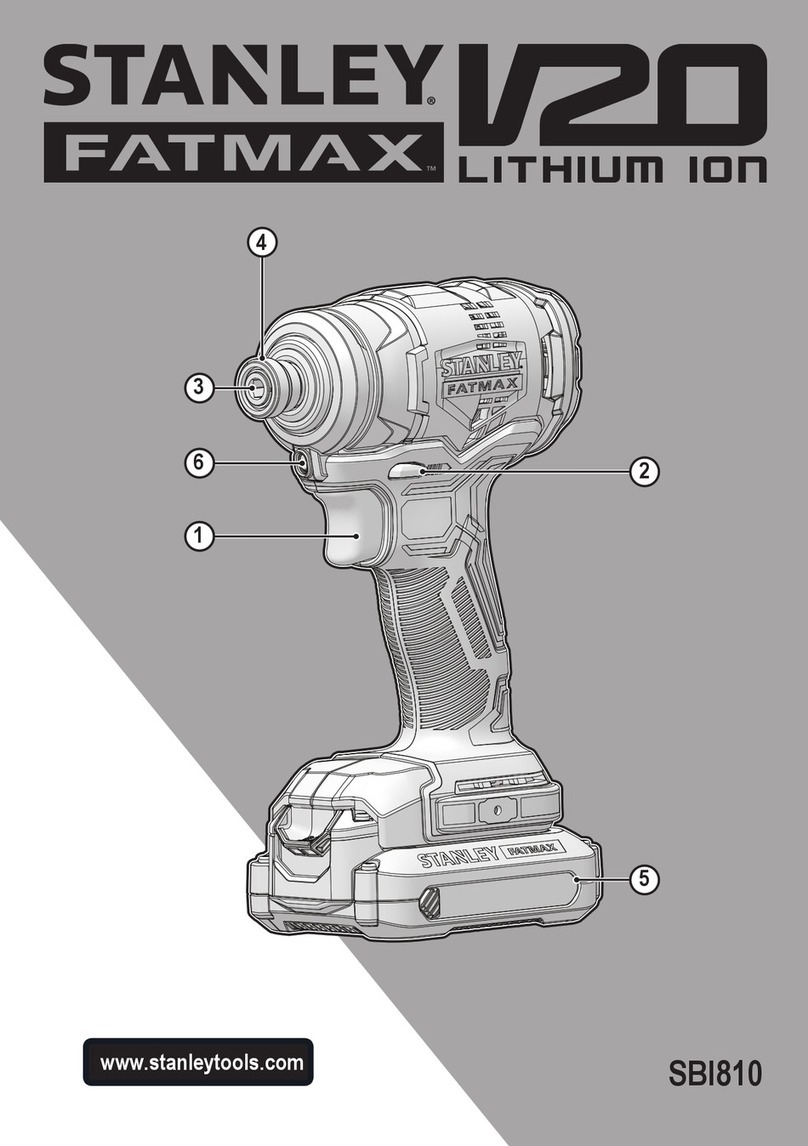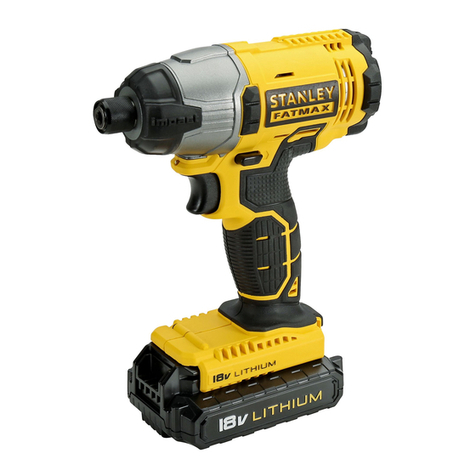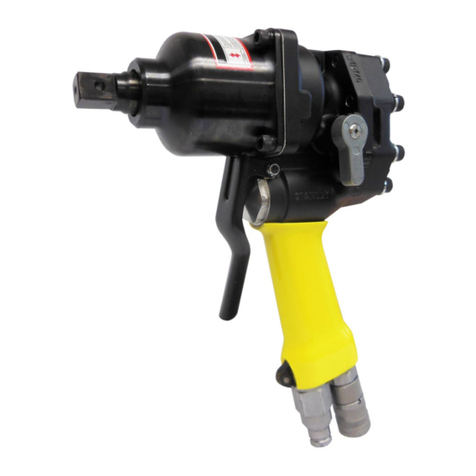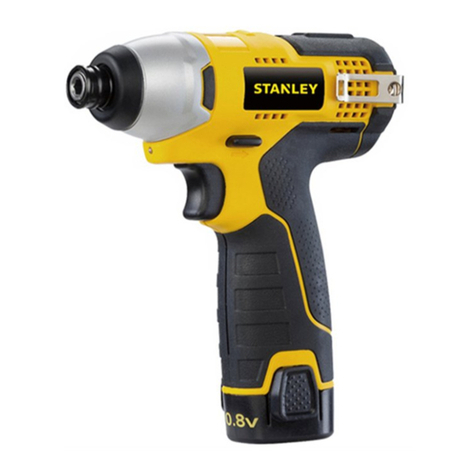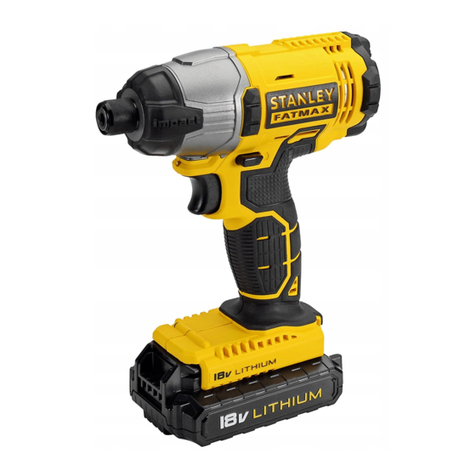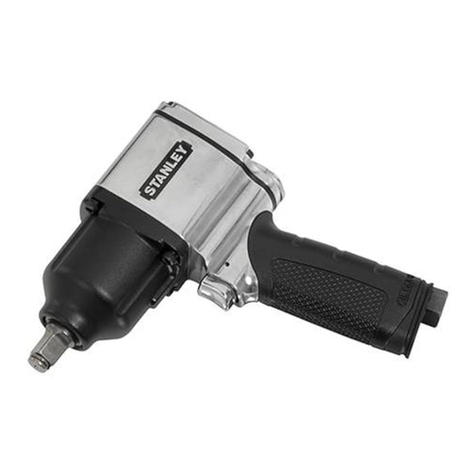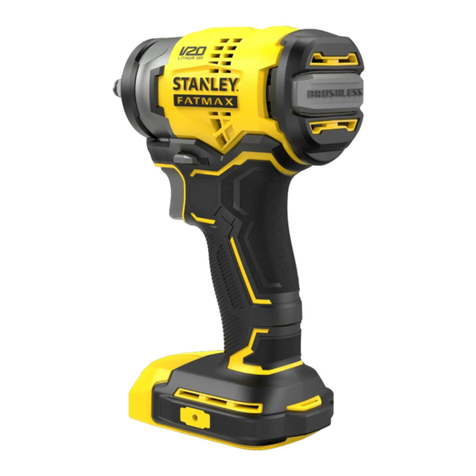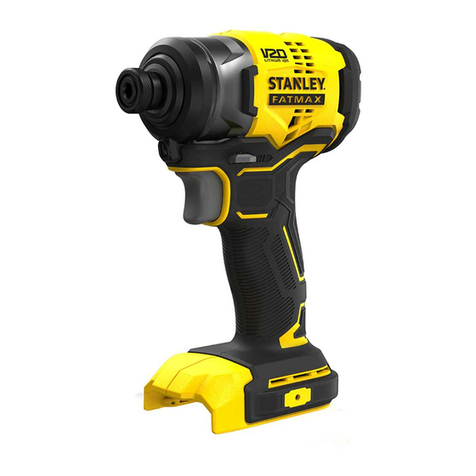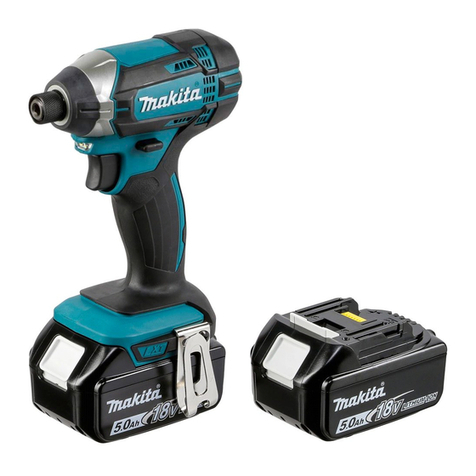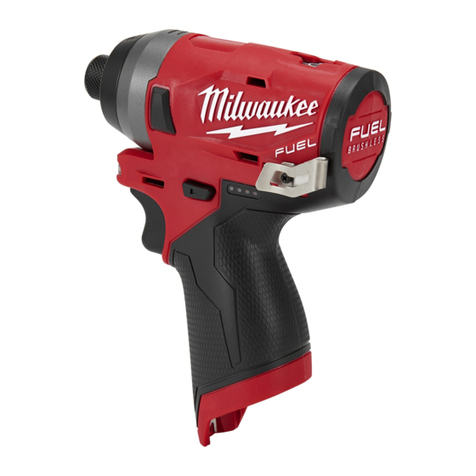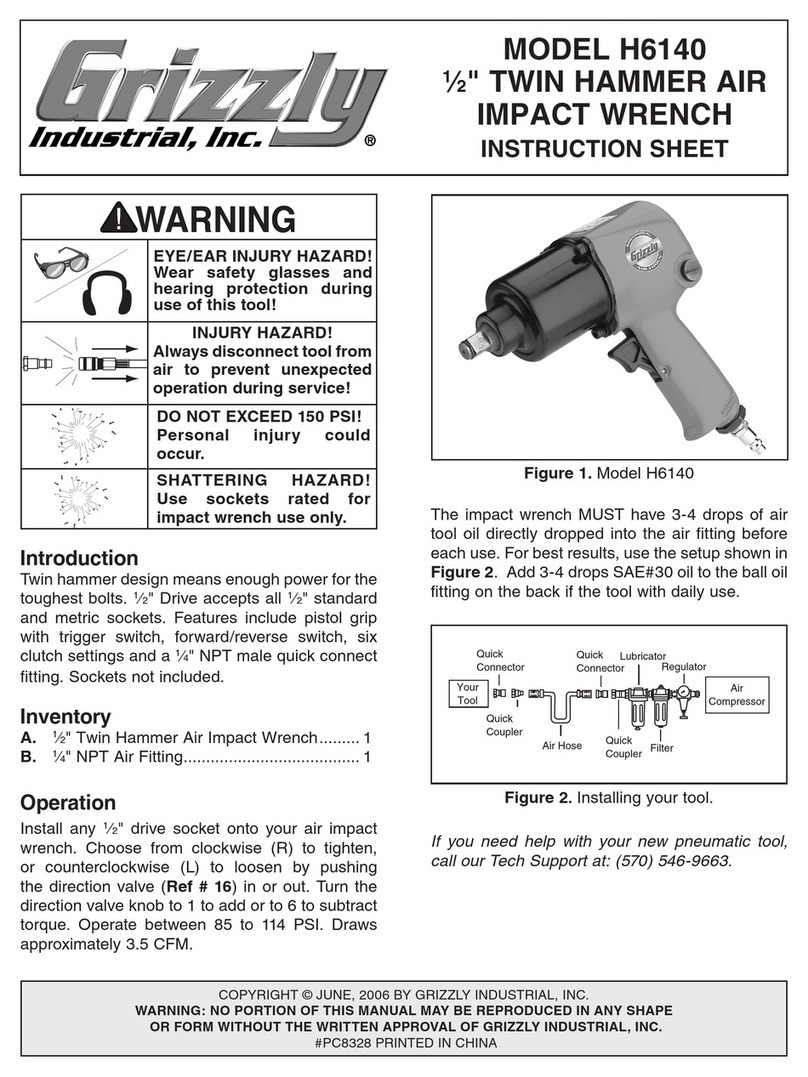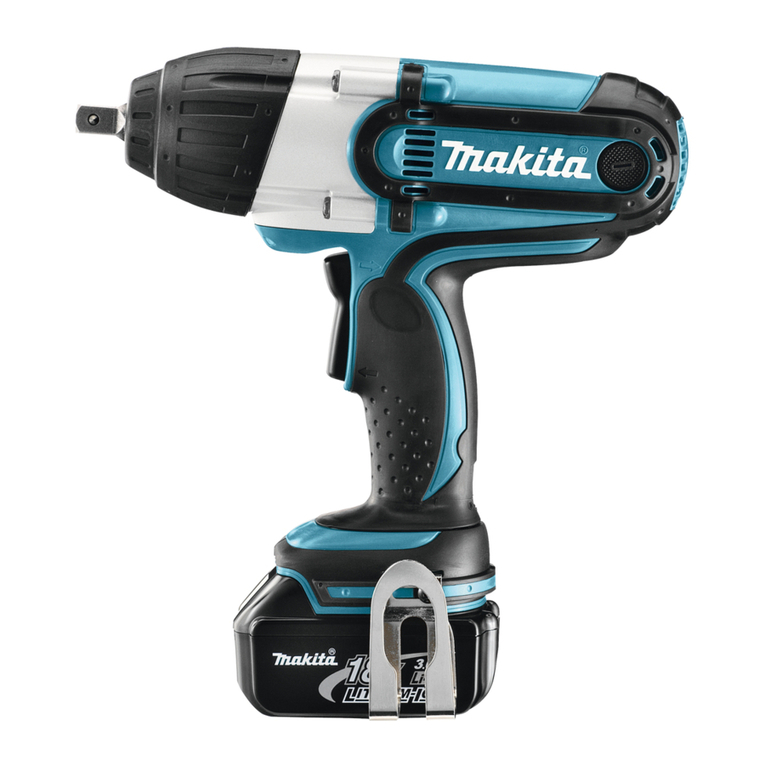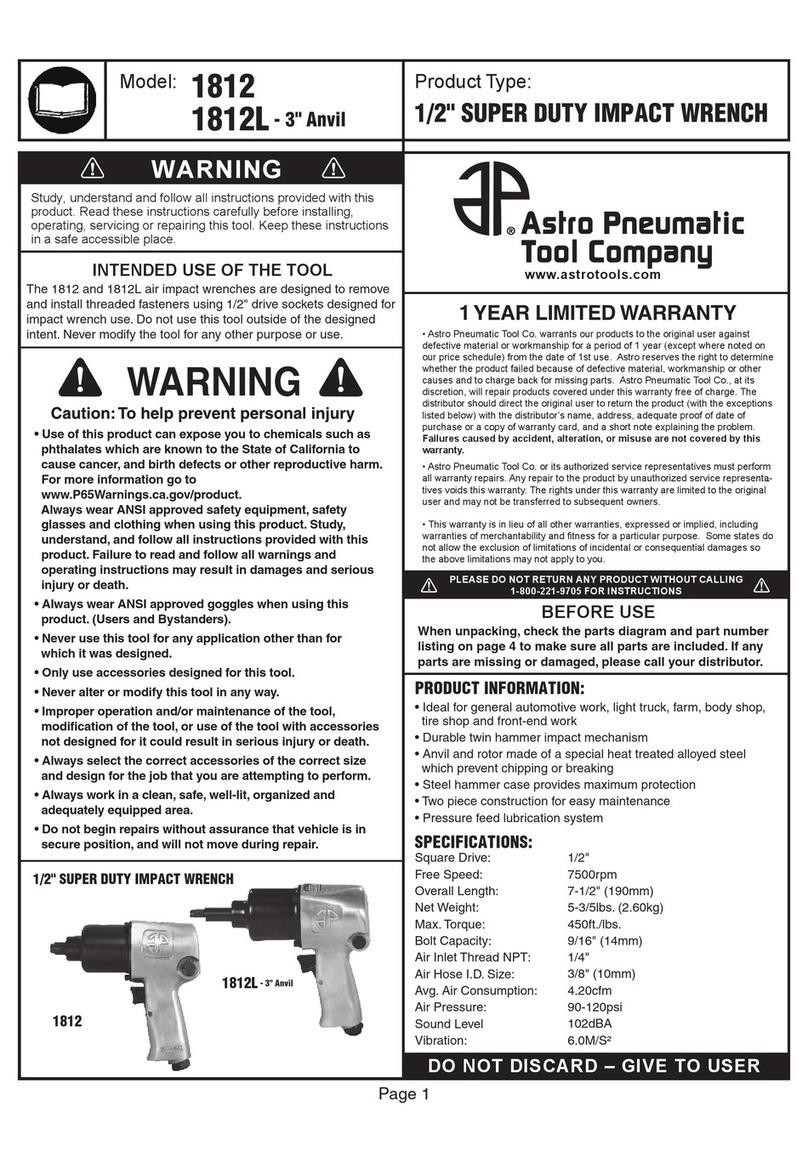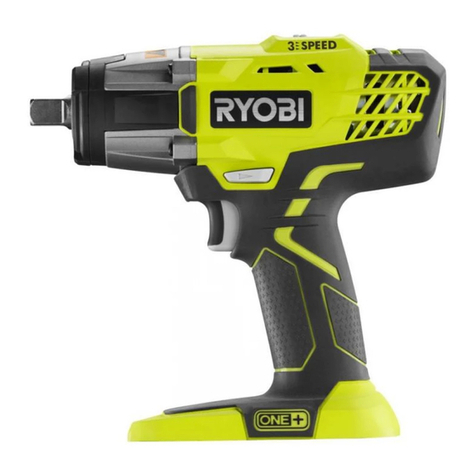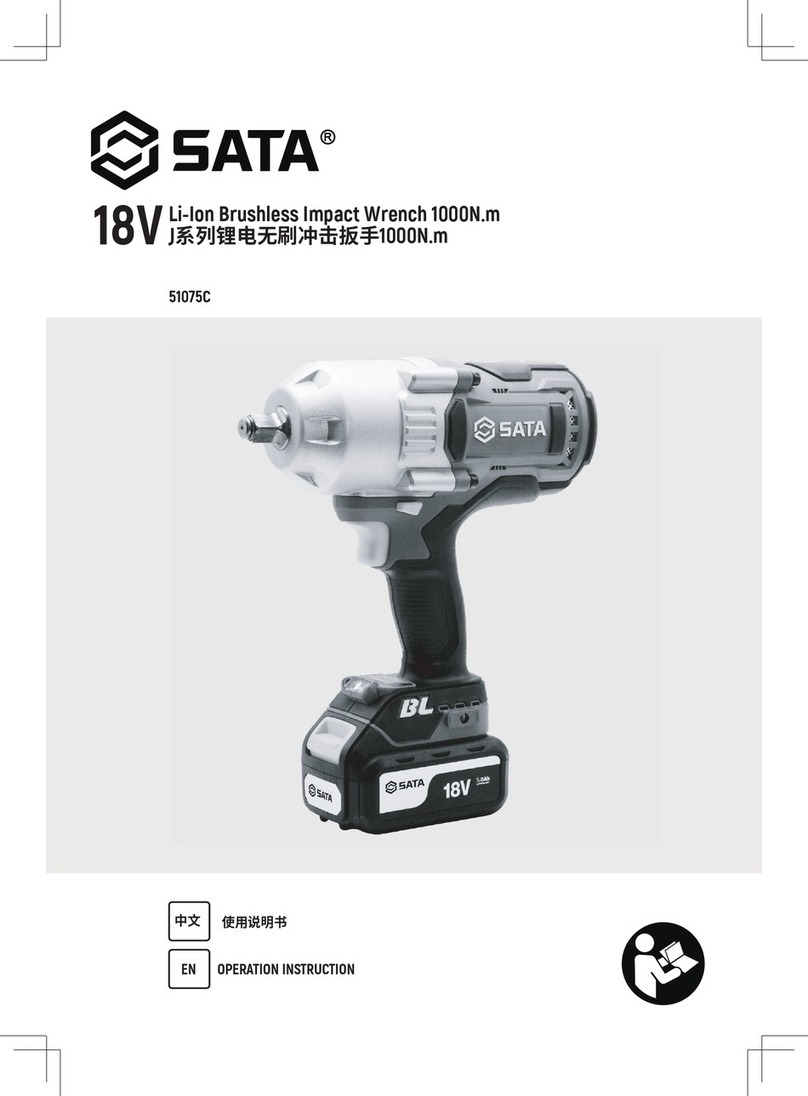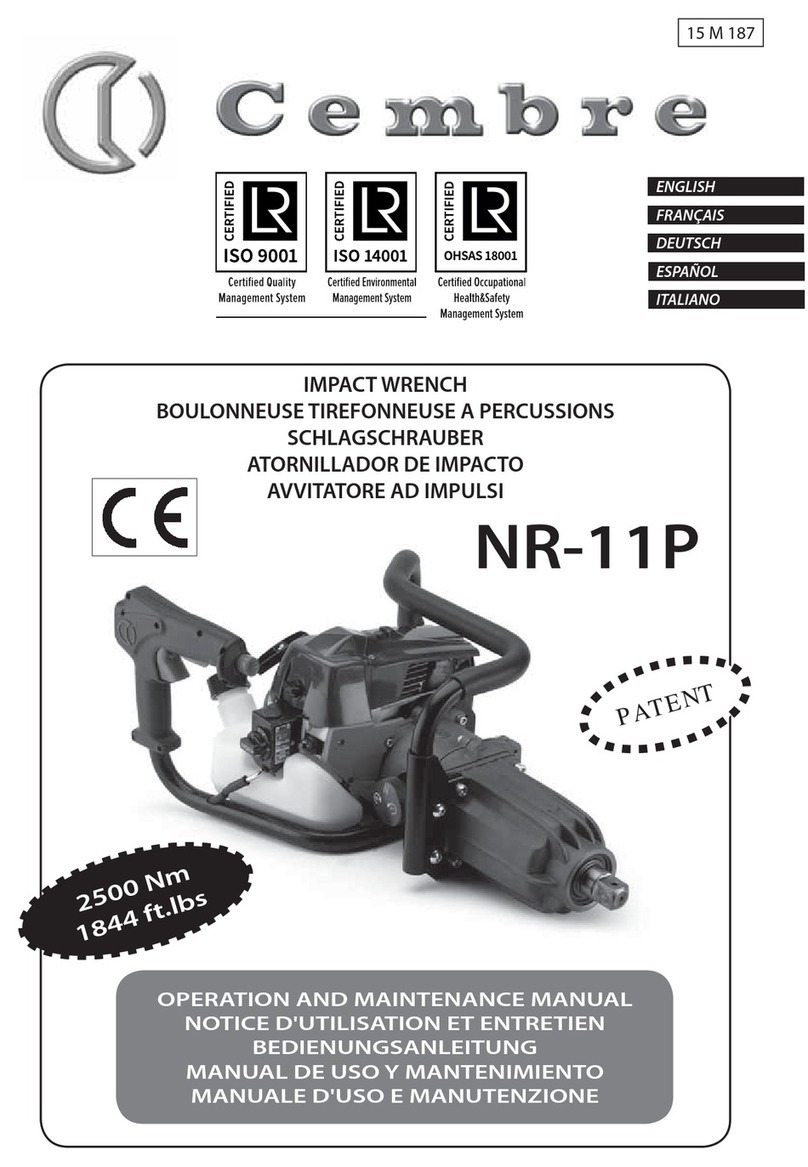
7
(Original Instructions) ENGLISH
Charging Process Refer the tables below for the state of
charge of the battery pack.
State of charge SC122
charging
green blink
fully charged
green light
hot/cold battery
damaged battery
red blink
red flash
Hot/cold pack delay
The SC122 charger have a hot/cold delay feature. When
the charger detects a battery that is hot, it automatically
delays charging until the battery has cooled. When the
charger detects a battery that is cold, it automatically delays
charging until the battery has warmed.
The red light will continue to blink and can’t start to charging
procedure. once the battery has cooled, the charger will
resume the charging procedure.
Damaged battery
The charger can detect a weak or damaged battery. The
red LED flashes in the pattern indicated on the label. If you
see this damaged battery blink pattern, do not continue
to charge the battery. Return it to a service center or a
collection site for recycling.
Electronic protection system
STANLEY Li-Ion batteries are designed with an Electronic
Protection System that will protect the battery against
overloading, overheating or deep discharge.
The tool will automatically turn off if the Electronic Protection
System engages. If this occurs, place the Li-Ion battery on
the charger until it is fully charged.
Important safety instructions for all battery packs
When ordering replacement battery packs, be sure to
include catalog number and voltage.
The battery pack is not fully charged out of the carton.
Before using the battery pack and charger, read the safety
instructions below. Then follow charging procedures
outlined.
Read all instructions
• Do not charge or use battery in explosive
atmospheres, such as in the presence of flammable
liquids, gases or dust. Inserting or removing the
battery from the charger may ignite the dust or fumes.
• Never force battery pack into charger. Do not
modify battery pack in any way to fit into a non-
compatible charger as battery pack may rupture
causing serious personal injury.
• Charge the battery packs only in STANLEY chargers.
• DO NOT splash or immerse in water or other liquids.
• Do not store or use the tool and battery pack in
locations where the temperature may reach or
exceed 40 ˚C (105 ˚F) (such as outside sheds or
metal buildings in summer).
WARNING: Never attempt to open the battery
pack for any reason. If battery pack case is
cracked or damaged, do not insert into charger.
Do not crush, drop or damage battery pack. Do not use
a battery pack or charger that has received a sharp blow,
been dropped, run over or damaged in any way (i.e.,
pierced with a nail, hit with a hammer, stepped on). Electric
shock or electrocution may result. Damaged battery packs
should be returned to service centre for recycling.
CAUTION:When not in use, place tool on
its side on a stable surface where it will not
cause a tripping or falling hazard. Some tools
with large
battery packs will stand upright on the battery pack but may
be easily knocked over.
Specific safety instructions for lithium ion (LI-Ion)
• Do not incinerate the battery pack even if it is
severely damaged or is completely worn out. The
battery pack can explode in a fire. Toxic fumes and
materials are created when lithium ion battery packs
are burned.
• If battery contents come into contact with the skin,
immediately wash area with mild soap and water.
If battery liquid gets into the eye, rinse water over the
open eye for 15 minutes or until irritation ceases. If
medical attention is needed, the battery electrolyte is
composed of a mixture of liquid organic carbonates and
lithium salts.
• Contents of opened battery cells may cause
respiratory irritation. Provide fresh air. If symptoms
persists, seek medical attention.
WARNING: Burn hazard. Battery liquid may be
flammable if exposed to spark or flame.
Transportation
STANLEY batteries comply with all applicable shipping
regulations as prescribed by industry and legal standards
which include UN Recommendations on the Transport of
Dangerous Goods; International Air Transport Association
(IATA) Dangerous Goods Regulations, International
Maritime Dangerous Goods (IMDG) Regulations, and
the European Agreement Concerning The International
Carriage of Dangerous Goods by Road (ADR). Lithium-
ion cells and batteries have been tested to section 38.3 of
the UN Recommendations on the Transport of Dangerous
Goods Manual of Tests and Criteria. In most instances,
shipping a STANLEY battery pack will be excepted from
being classified as a fully regulated Class 9 Hazardous
material. In general, the two instances that require shipping
Class 9 are:
1. Air shipping more than two STANLEY lithium-ion battery
packs when the package contains only battery packs
(no tools), and
2. Any shipment containing a lithium-ion battery with an
energy rating greater than 100 watt hours (Wh). All
lithiumion batteries have the watt hour rating marked on
the pack.
Regardless of whether a shipment is considered excepted
or fully regulated, it is the shipper’s responsibility to consult
the latest regulations for packaging, labeling/marking and
documentation requirements.
Transporting batteries can possibly cause fire if the battery
terminals inadvertently come in contact with conductive
materials. When transporting batteries, make sure that
the battery terminals are protected and well insulated from
materials that could contact them and cause a short circuit.
